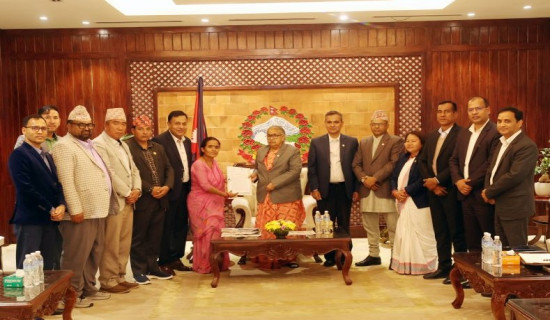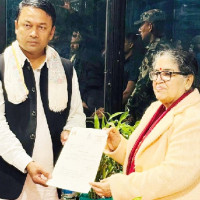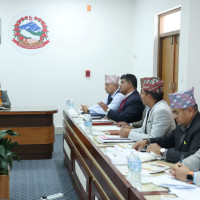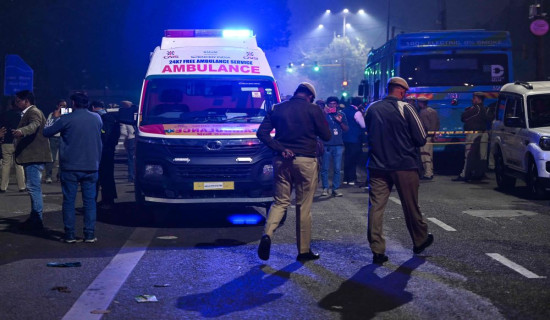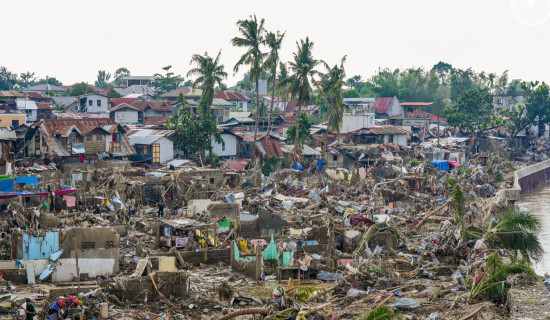- Tuesday, 11 November 2025
Trump’s U-turn On Ukraine War
With his sudden U-turn on the Ukraine war, US President Donald Trump has once again shown his mercurial character. “Ukraine, with the support of the European Union and NATO, could win back all of the territory Russia has captured since its invasion more than three years ago,” President Trump wrote on his Social Truth following his meeting with Ukrainian President Volodymyr Zelenskyy on the sidelines of the United Nations General Assembly. With this dramatic shift, Trump will no longer be the peace leader that he had projected himself to be before his election to the presidency. It appears his efforts to find a negotiated settlement of the Ukraine war have produced ‘close to zero’ results.
Trump’s turnaround has cheered Ukraine and its European allies but this sharply contradicts his earlier position on the protracted Russia-Ukraine conflict. In the beginning, Trump was not positive about Zelenskyy’s approach to ending the Ukraine war. During his bust-up with the Ukrainian President at the Oval Office in February, Trump slammed him, stating that “you don’t have the cards” to achieve a good outcome from Russia. Trump and his team have also suggested that Ukraine cede its lost territories to Russia to restore permanent peace. Trump was frustrated after his call for a ‘ceasefire’ was not responded to, as Moscow insisted on forging a peace agreement by resolving the root causes of the conflict.
‘Paper tiger’ analogy
Trump went on to castigate Russia, stating that it is a ‘paper tiger’ and ‘President Vladimir Putin and Russia are in BIG Economic trouble, and this is the time for Ukraine to act.’ But his calling Russia a ‘paper tiger’ appears to be more rhetorical than realistic. Interestingly, he chose the phrase that was first used by Chairman Mao to deride the US itself in his interview with American journalist Anna Louise Strong in 1946. Referring to the US that supported his sworn enemy, the Kuomintang, Mao said, “In appearance it is very powerful but in reality it is nothing to be afraid of; it is a paper tiger. Outwardly a tiger, it is made of paper, unable to withstand the wind and the rain. I believe that the United States is nothing but a paper tiger.” By using the ‘paper tiger’ analogy, Mao sought to boost the morale of the Chinese Communist Party and its Red Army to defeat Chiang Kai-shek’s army.
However, analysts argue that Trump’s use of the term ‘paper tiger’ hardly reflects the reality in the context of the Ukraine war, which Russia terms a ‘special military operation.’ It has annexed more than 20 per cent of Ukrainian territory and wants full control of four eastern and southern regions. Trump resorted to this comparison as part of his psychological tactic to underestimate Russia’s military and financial strength.
Meanwhile, Russian President Putin has taken a swipe at Trump for labelling Russia a ‘paper tiger’. Speaking at the Valdai Discussion Group in the Black Sea resort of Sochi recently, he said that this phrase was suitable for the US-led NATO alliance instead of Russia itself. He said: “Well, if we are fighting with the entire NATO bloc, we are moving, advancing, and we feel confident, and we are a 'paper tiger', then what is NATO itself?"
It is believed that globalists, the mainstream deep state and the military industrial complex had their role in Trump’s policy reversal. Various interpretations are offered to grasp Trump’s reverting to Joe Biden’s strategy. Joseph Bosco, in an article published in THE HILL, writes, “It could well be that Trump’s tough new language is merely another gambit to get Putin to the negotiating table.” But he also argues that ‘it was a smokescreen to hide the decision to wash his (Trump) hands of the entire matter’. This line of thought is based on Trump’s earlier position, in which he let both Ukraine and Russia fight it out. Trump doubted Ukraine’s capacity to win the war, given Russia’s huge manpower advantage and implied that he would stop military support to Ukraine.
‘Collapse’ forecast
Political analyst Nadezhda Romanenko sees the ‘paper tiger’ analogy as a psychological warfare based on ‘imminent collapse’ forecasts that the West has repeatedly made since 2022. In an opinion piece published in RT, he writes, “For decades, critics of Moscow have used similar language to argue that Russia’s military power is overstated, its economy brittle, and its system fragile. The Russian economy, despite sanctions, has not collapsed.” To cope with sanctions, Russia has co-opted its economy to war by re-routing trade and harnessing vast natural resources.
Trump’s declaration that he was open to providing Ukraine with long-range weapons has ruffled feathers in the Kremlin. Kyiv has been demanding that the US provide Tomahawk missiles capable of reaching 1000 km and hitting targets deep within Russian territory. Though Trump has not made any decision to this effect, Russia has already warned that the supply of Tomahawks would trigger a dangerous new escalation. The US might think twice before delivering the Tomahawk missiles to Ukraine, as this could usher the conflict into another phase, with the risk of using nuclear weapons. Currently, Russia and the European Union are extremely close to a direct conflict. The US re-involvement in the Ukraine war will inevitably bring an end to its communication channel with Moscow. This suggests the war will end through combat, not diplomacy.
(The author is Deputy Executive Editor of this daily.)



